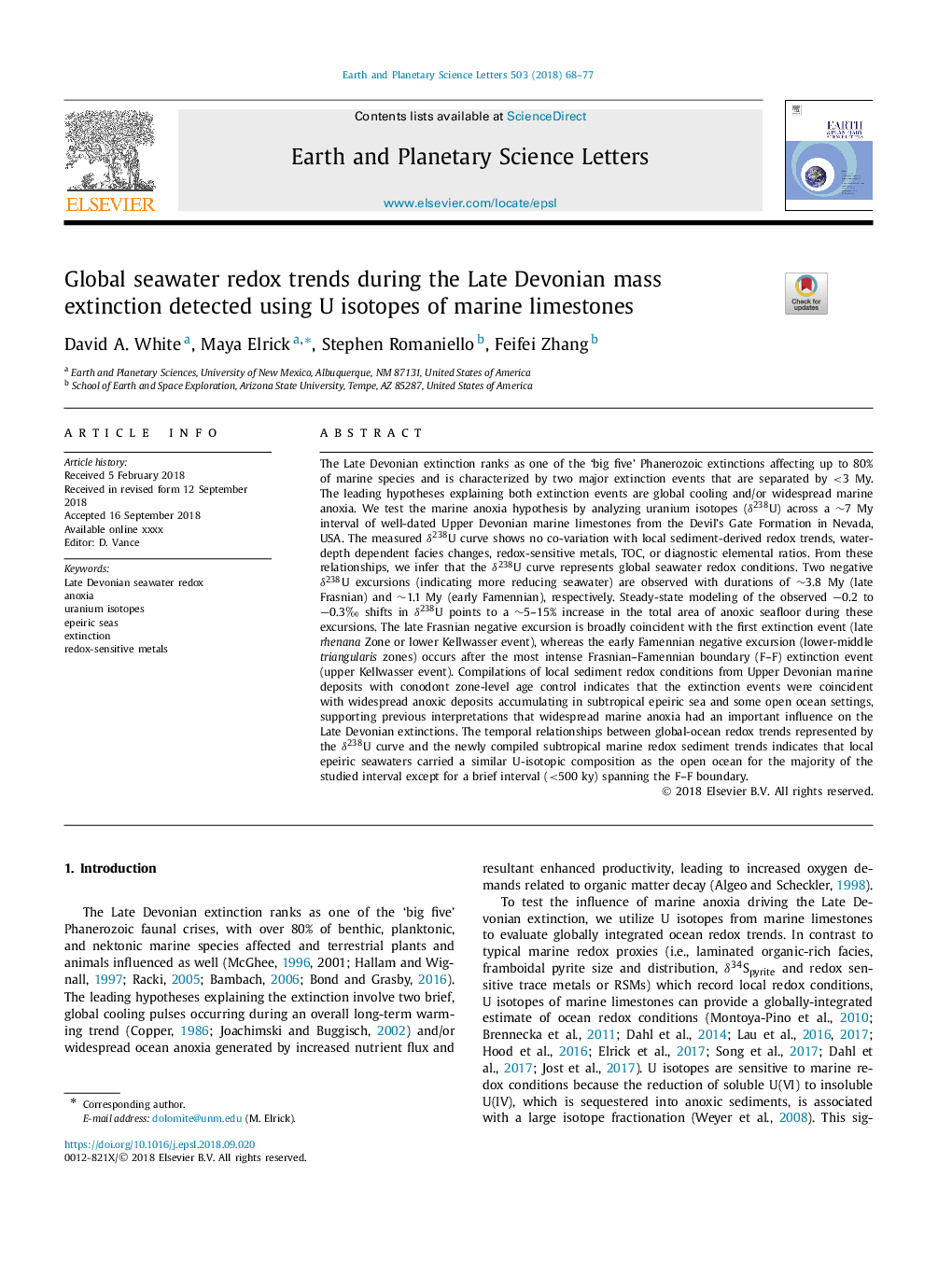| کد مقاله | کد نشریه | سال انتشار | مقاله انگلیسی | نسخه تمام متن |
|---|---|---|---|---|
| 11024688 | 1701088 | 2018 | 10 صفحه PDF | دانلود رایگان |
عنوان انگلیسی مقاله ISI
Global seawater redox trends during the Late Devonian mass extinction detected using U isotopes of marine limestones
دانلود مقاله + سفارش ترجمه
دانلود مقاله ISI انگلیسی
رایگان برای ایرانیان
کلمات کلیدی
موضوعات مرتبط
مهندسی و علوم پایه
علوم زمین و سیارات
علوم زمین و سیاره ای (عمومی)
پیش نمایش صفحه اول مقاله

چکیده انگلیسی
The Late Devonian extinction ranks as one of the 'big five' Phanerozoic extinctions affecting up to 80% of marine species and is characterized by two major extinction events that are separated by <3 My. The leading hypotheses explaining both extinction events are global cooling and/or widespread marine anoxia. We test the marine anoxia hypothesis by analyzing uranium isotopes (δ238U) across a â¼7 My interval of well-dated Upper Devonian marine limestones from the Devil's Gate Formation in Nevada, USA. The measured δ238U curve shows no co-variation with local sediment-derived redox trends, water-depth dependent facies changes, redox-sensitive metals, TOC, or diagnostic elemental ratios. From these relationships, we infer that the δ238U curve represents global seawater redox conditions. Two negative δ238U excursions (indicating more reducing seawater) are observed with durations of â¼3.8 My (late Frasnian) and â¼1.1 My (early Famennian), respectively. Steady-state modeling of the observed â0.2 to â0.3â° shifts in δ238U points to a â¼5-15% increase in the total area of anoxic seafloor during these excursions. The late Frasnian negative excursion is broadly coincident with the first extinction event (late rhenana Zone or lower Kellwasser event), whereas the early Famennian negative excursion (lower-middle triangularis zones) occurs after the most intense Frasnian-Famennian boundary (F-F) extinction event (upper Kellwasser event). Compilations of local sediment redox conditions from Upper Devonian marine deposits with conodont zone-level age control indicates that the extinction events were coincident with widespread anoxic deposits accumulating in subtropical epeiric sea and some open ocean settings, supporting previous interpretations that widespread marine anoxia had an important influence on the Late Devonian extinctions. The temporal relationships between global-ocean redox trends represented by the δ238U curve and the newly compiled subtropical marine redox sediment trends indicates that local epeiric seawaters carried a similar U-isotopic composition as the open ocean for the majority of the studied interval except for a brief interval (<500 ky) spanning the F-F boundary.
ناشر
Database: Elsevier - ScienceDirect (ساینس دایرکت)
Journal: Earth and Planetary Science Letters - Volume 503, 1 December 2018, Pages 68-77
Journal: Earth and Planetary Science Letters - Volume 503, 1 December 2018, Pages 68-77
نویسندگان
David A. White, Maya Elrick, Stephen Romaniello, Feifei Zhang,